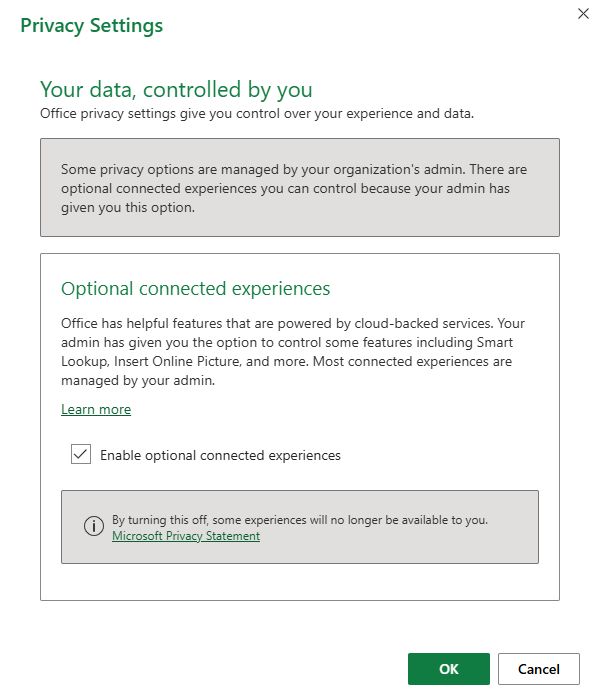Explained: the Microsoft connected experiences controversy
Recently we’ve seen some heated discussion about Microsoft’s connected experiences feature. As in many discussions lately there seems to be no room for middle ground, but we’re going to try and provide it anyway.
First of all, it’s important to understand what the “connected experiences” are.
Microsoft describes it like this:
“Connected experiences that analyze your content are experiences that use your Office content to provide you with design recommendations, editing suggestions, data insights, and similar features.”
If that sounds like auto-correct on steroids, you’re close. You like it or you don’t.
But I found that there are two types of connected experiences.
Let’s start with a locally saved document created in Microsoft 365 (Word). To find the connected experiences settings, you’ll need to
- Click on File > Options

- Select Trust Center and click on Trust Center Settings

- Select Privacy Options and click on Privacy Settings

Then you’ll see three entries for Connected experiences:
- Experiences that analyze your content
- Experiences that download online content
- All connected experiences
My tinfoil hat warns me that the second one is bound to show up in some vulnerability, but nowhere does it say that anything you produce will be shared with anyone, let alone train an AI model. If anything is worrying in there, it’s the fact that it uses content in your documents to find online information that might be of interest to you.

Feel free to turn these options off.
For online documents created with Microsoft 365 apps it’s a different topic, and depends on what the administrator of the organization that provided it has decided to make available to you.
The overview of optional connected services provided by Microsoft says:
“If you have a work or school account, your organization’s admin may have provided you with the ability to use one or more cloud-backed services (also referred to as “optional connected experiences”) while using the Office apps, like Word or Excel, that are included with Microsoft 365 Apps for enterprise.”
It then goes on to list all the possible optional connected experiences. The settings for these are of the type “all or nothing.”
You can find these settings if you have a document open in your browser by following the path File > About > Privacy Settings > Optional connected experiences.

The official Microsoft 365 account on X tweeted to say it didn’t use customer data to train large language models (LLMs)—a type of artificial intelligence (AI) program—in M365 apps:
“In the M365 apps, we do not use customer data to train LLMs. This setting only enables features requiring internet access like co-authoring a document.”
So, turning that option off might result in some lost functionality if you’re working on the same document with other people in your organization.
If you want to turn these settings off for reasons of privacy and you don’t use them much anyway, by all means, do so. The settings can all be found under Privacy Settings for a reason. But nowhere could I find any indication that these connected experiences were used to train AI models.
We don’t just report on threats—we remove them
Cybersecurity risks should never spread beyond a headline. Keep threats off your devices by downloading Malwarebytes today.